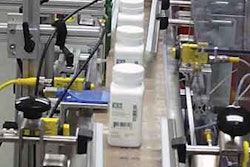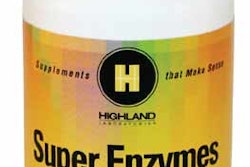On a secondary level, the pilot is assessing the use of a single infrastructure, ultra-high frequency (UHF) technology, for package level, case level, and pallets, says Jackson: “Obviously, a dual-frequency infrastructure [that includes high-frequency, RFID] would be a little more costly and more complicated."
Cardinal’s pilot uses 914 MHz UHF Gen 2 tags and readers from Alien Technology (www.alientechnology.com). IBM (www.ibm.com) provided middleware and data collection software, and VeriSign (www.verisign.com) supplied project management.
Along with Cardinal, the pilot involves two pharmaceutical manufacturers, one a generic manufacturer, the other a mid-tier pharmaceutical manufacturer, and a mail-order pharmacy. Months in planning, the pilot will be completed by early August. Two products—tablets in 30- or 90-count plastic bottles—are read at the unit, case, and pallet levels totaling thousands of units, Jackson says.
The pilot encompasses Cardinal Health’s packaging and distribution organizations and starts at its Printed Components facility in Moorestown, NJ, where the labels are printed and converted to RFID tags. Next, at Cardinal’s packaging plant in Philadelphia, the RFID labels are applied to bottled product and the tags are encoded and verified before they are manually cased. Labeling speeds remain at rates of 60 bpm and 120 bpm, respectively, for the large and small bottles.
The labels are converted in two sizes, 1x2” and 2x3”, corresponding to the two bottle sizes. Jackson says that the bottle RFID labels are exactly the same as the products’ usual labels with the exception of the 1x1” RFID tag on the backside.
Each case is applied with an RFID label, too. An Alien RFID portal helps make a “parent-child” association between the bottles’ RFID tags and the particular case’s RFID tag.
The cases are palletized and an RFID label is applied to the load before it is stretch wrapped. The tags are read as the load spins, and the individual case tags are associated to the pallet’s RFID tag in this higher level parent-child association. Cardinal also makes a pallet and case RFID read on outbound loads and bottles at the dock door, triggered by a photoeye. Loads are shipped to Cardinal’s Forward Distribution Center in Findlay, OH. There, Cardinal conducts a receiving read and then a “processing read” when the product is uncased and individual bottles are loaded into totes. After an outbound RFID read, the last RFID read of bottles is made inbound at the mail-order pharmacy.
Jackson says “this is a true operational pilot. We’re determining whether this technology can be adopted into current operations.”
After the data is analyzed, Cardinal will release a report on the pilot in September. Just a week into the pilot, Jackson says that they have seen a definite improvement in read rates in using Gen 2 RFID versus Gen 1, “which would be expected,” he points out.
























